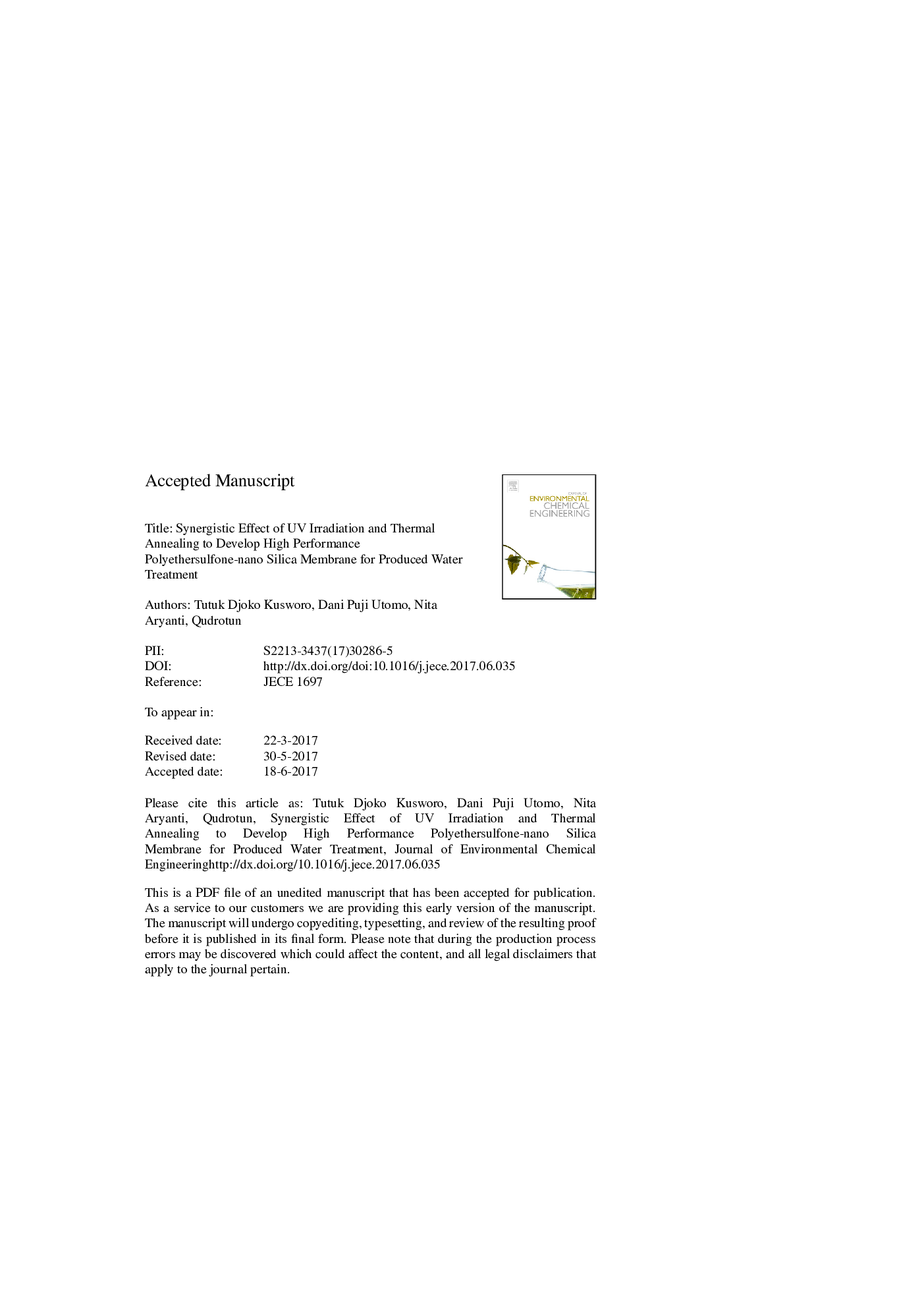| Article ID | Journal | Published Year | Pages | File Type |
|---|---|---|---|---|
| 4908685 | Journal of Environmental Chemical Engineering | 2017 | 39 Pages |
Abstract
The current problems in membrane separation are mostly related the low permeability and high foulant deposition of the membranes. Polyethersulfone-nano silica membrane was developed to produce membranes with high permeation. However, it reduced the selectivity of the membrane due to microvoid formation between the inorganic filler and polymer. UV irradiation and thermal annealing treatments were synergistically applied to Polyethersulfone-nano silica membrane to overcome the mentioned problem. The nano-sized silica was incorporated in the polyethersulfone as an inorganic filler using solution-casting dry/wet phase inversion technique. After exposing the membrane film under the UV ray, the thermal annealing was applied at varying temperatures and annealing time. Produced water treatment experiments showed that the combination of UV irradiation and thermal annealing on the membrane improved water permeability and selectivity due to the synergistic effect of the both treatments. The longer thermal annealing treatment slightly reduced the permeability, but increased the selectivity. Separation performance of the UV irradiated and thermal annealed PES-nano silica membrane was better than the existing membranes. The UV irradiation and thermal annealing process are beneficial for improving the permeability and selectivity of the PES-nano silica membrane.
Related Topics
Physical Sciences and Engineering
Chemical Engineering
Chemical Engineering (General)
Authors
Tutuk Djoko Kusworo, D.P. Utomo, N. Aryanti, Qudratun Qudratun,
